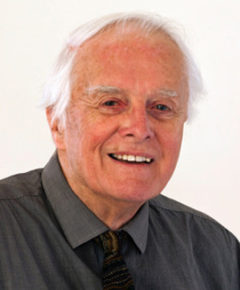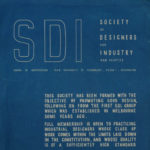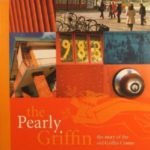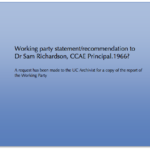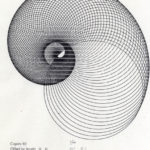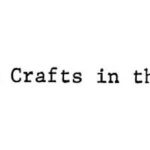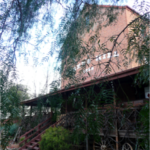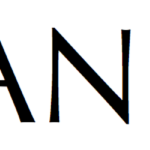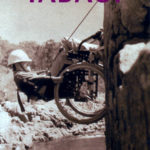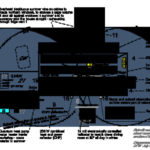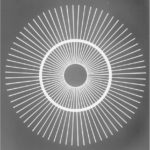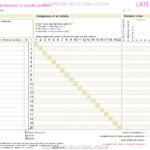An increasing slice of my design thinking time has been taken up with a growing awareness that the word ‘design’ does not seem to be understood, appreciated or even enjoyed by most people and that some action needs to be taken to resolve that huge gap in our education and understanding of our integral part in nature.
This unrecognised gap I have come to call ‘social design’ in that it is not so much about designing things but finding social ways of improving society for the better, by discussion, education and creating awareness of unrecognised ways that are missing that could improve all our lives.
It is perhaps ways of ‘designing our thinking processes’ toward a social outcome rather than tangible or tactile objects, in which design is a fundamental element in the concept and also the process of achieving that aim. In this sense then, I have included the books I have written (and mostly self-published) as they are all about a need for better design.
I have often thought, on seeing some ugly product – “why would anyone waste time on creating ugliness” ? Again, on seeing an opportunity for creating something that has not been recognised – “why doesn’t someone design a better something or other ?”
In recognising such shortcomings I am usually reminded of an old Lancashire phrase – “If tha wants owt dun, do it thissel” and this is exactly what happened when Fred Ward was grumbling to Ross Hohnen at ANU around 1956 about the need for an Australian Council of Industrial Design similar to the English model – Fred was stimulated to do something about it which eventually resulted in my joining him at ANU in 1957 to help start the Industrial Design Council of Australia (see 1956 IDCA).
Many of the good things in society have come about by people having ‘light bulb’ or ‘Eureka’ moments with such questions as “what if…….” and this particular section of my Portfolio shows that I have had a leading role in starting about 15 social organisations which were not only design actions but also had a core design activity, which is not surprising I suppose, as they come from a designer.
To my readers this may well beg the question – what do I really mean by design ?
If we look back at Australian history the word ‘design’ would seem to have become misunderstood as the output of designers has usually been for public consumption – consumer goods, objects, graphics, landscapes, buildings, all of which can be seen and often avidly publicised by the media. Often this has been based on their novelty and visual values. As humans we seem to have some insatiable appetite for novelty and it is perhaps conceivable that we have a gene in our DNA which makes us all seek this out. Much however, tends to be based on initial visible factors – fashion, colour, form etc, tending to attract our attention and give us pleasure. It seems to be accepted that about 65% of our total sensory reception is through the eyes which may account for the degree of importance we give to it.
Important as this undoubtedly is, I feel we have to become much more interested in the reverse side of the design coin – to arouse the critical awareness of our consumer society; our ability to recognise better value for money and an understanding of where we are all going on a finite planet. There is no question that we all live in a finite world which cannot support an infinite number of people. Belatedly the world seems to be waking up to the concept of sustainability – for example, our increasing awareness that renewable energies are essential for our survival.
My interest has been in promoting the concept of designing for reality and for an increasing understanding of its corollary of awareness by society that design has tremendous power for good in everything we as humans try to do. In this way design as a verb must logically lead us toward sustainability – a direction toward better design to satisfy real needs we cannot afford to ignore on a finite planet
Since arriving in Australia in 1947 I have been involved in the establishment of a number of social movements which I believed had design as an inherent element in their aims. These groups of like-minded people usually already believed that ‘things’ could be improved for the good of society and I felt that the use of a more inclusive, holistic (design) approach would help toward the achievement of their aim.
My specific involvement in Social Design :
(a brief explanation of social design would be – the inculcation of a design ‘awareness’ in the social mindset of how design thinking can improve most organisations in the quality and scope of their thinking and their end products through critical and sensory appreciation).
I have been involved in the following promotions of social design either as initiator (I) or joining (j) an established movement elsewhere to start a similar group where I was living.
My aim was twofold – to initiate & achieve a social good in which better design was a basic aim or outcome and/or – to assist a social organisation by way of the design process.
(in chronological order
General aims of the groups : 1953 Society of Designers for Industry (NSW)( j/I ) – development of a code of ethics, design education awareness of social responsibility. 1956 Industrial Design Council of Australia (I) – raising the standard of design of Australian manufacturing industry, consumer awareness 1959 Griffin Centre, Canberra. (I) – cultural centre for the creative arts societies, coordinated premises, 1960 Craft Association of the ACT. (I) – association of creative craftsmen ACT, code of ethics, raising of design standards educational programs. Evolved out of SDI. code of ethics, collaboration w. Patents Office 1970 Association for Modern Education (j) – formation of a new school (K-12) Duntroon. 1970 Design in Education Council Australia (I) – design proposal for Aust sec. schools, of design awareness raising, innovation etc.In-service design courses. + my own thinking on this topic over a wider time scale – see entry 1948-2016 Social design. 1980s “Design for Living” (I) – series of 4 courses over several years to University of the Third Age to raise social awareness of design in daily life. 1985 Disability Aids Collective ACT Inc (I) – organisation of batch production of TADACT devices. 2000 Australian National Biocentre (j) – community awareness of sustainability, better design toward global health. Several lectures given. Design Coordinator for design of ANB bldgs. & Chair of Design Group until the Canberra 2003 bushfire destroyed all our drawings. 2003 The Phoenix Group (I) – mainly me – gave a few lectures to help those refugees from the 2003 bushfire to plan effectively for rebuilding their houses using better design. 2016 FFF Living Centre (Biocentre 2?) (j) – a phoenix-like revival of the ANB (Biocentre) by the Some dates may be a little inaccurate
1960 Wood Group of the ACT (I) – national collective of wood craftsmen, code of ethics, raising of design standards.
1962 Design Institute Aust. ACT (j/I) – local chapter of designers, code of ethics …
1965 ? Inventors Association ACT (j/I) – national and local bodies to assist inventors,
1966 School of Environmental Design, CCAE. (I) – formation of new school at CCAE (now Univ of Can. professional ethics, design standards.
1966 Art, Science Centre proposal (I) – proposal booklet > Ross Hohnen
(booklet lost – must be copies in papers of Ross Hohnen /Prof. Arthur Birch. Concept gazumped by (Dr Michael Gore > Questacon,
(AME School) guided by student interests
1978 The New Millwrights (I) – awareness in energy & housing sustainability group, lectures, advice, discussion groups 1979 Technical Aid to the Disabled ACT (j/I) – formation of voluntary group to assist disabled people through better designed devices.
1984 IDCA Schools Design Awards ACT (I) – program to raise design awareness in schools, innovation, inventiveness.
1981 Independent Living Centre (ACT) (l/j) – initiated the Canberra group of the ILC movement with Ngaire Whitehead and others.
1990 TADACT Productions Inc. (I) – ditto – new group based on better design standards.
renamed Frank Fenner Foundation. I gave advice and dwgs from my remaining files
